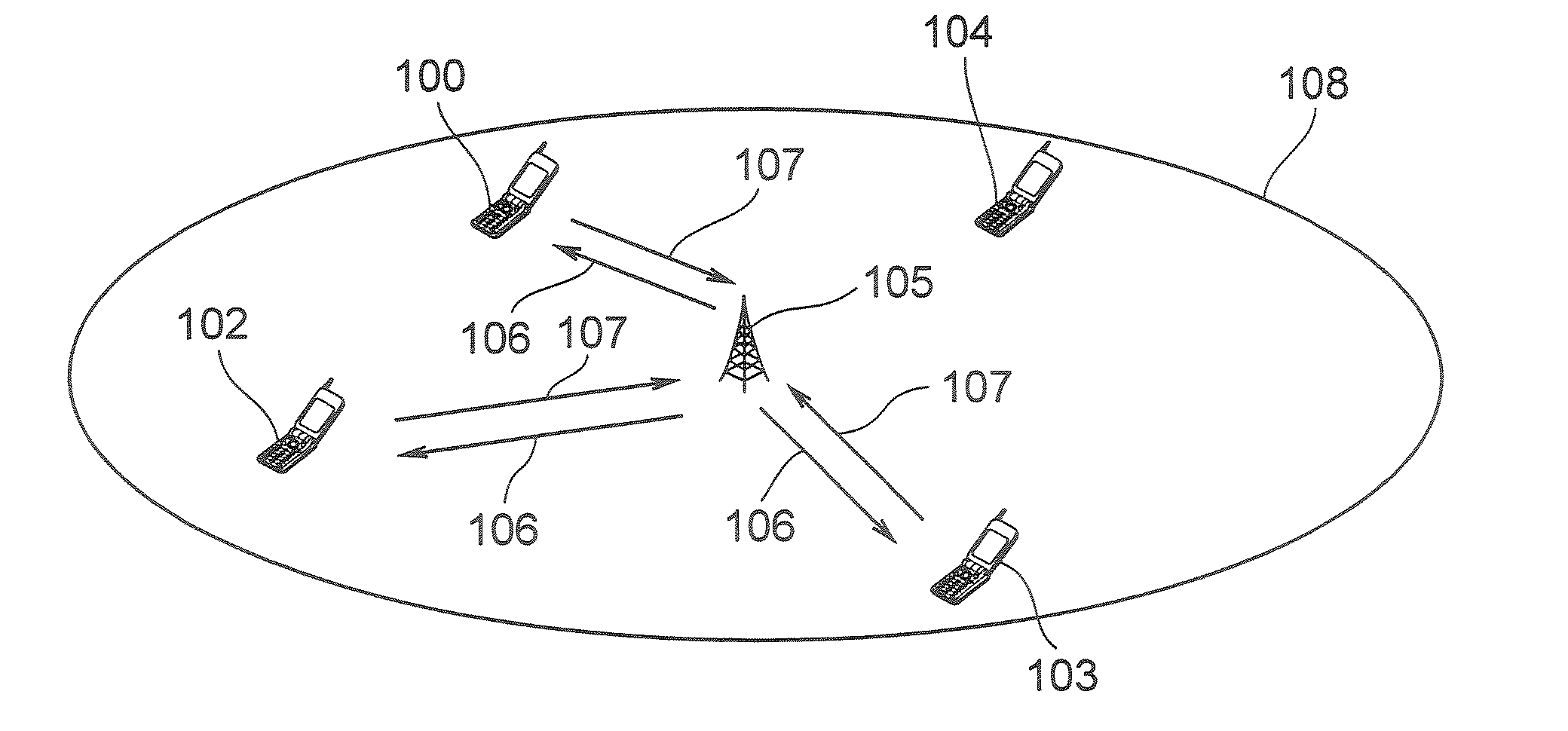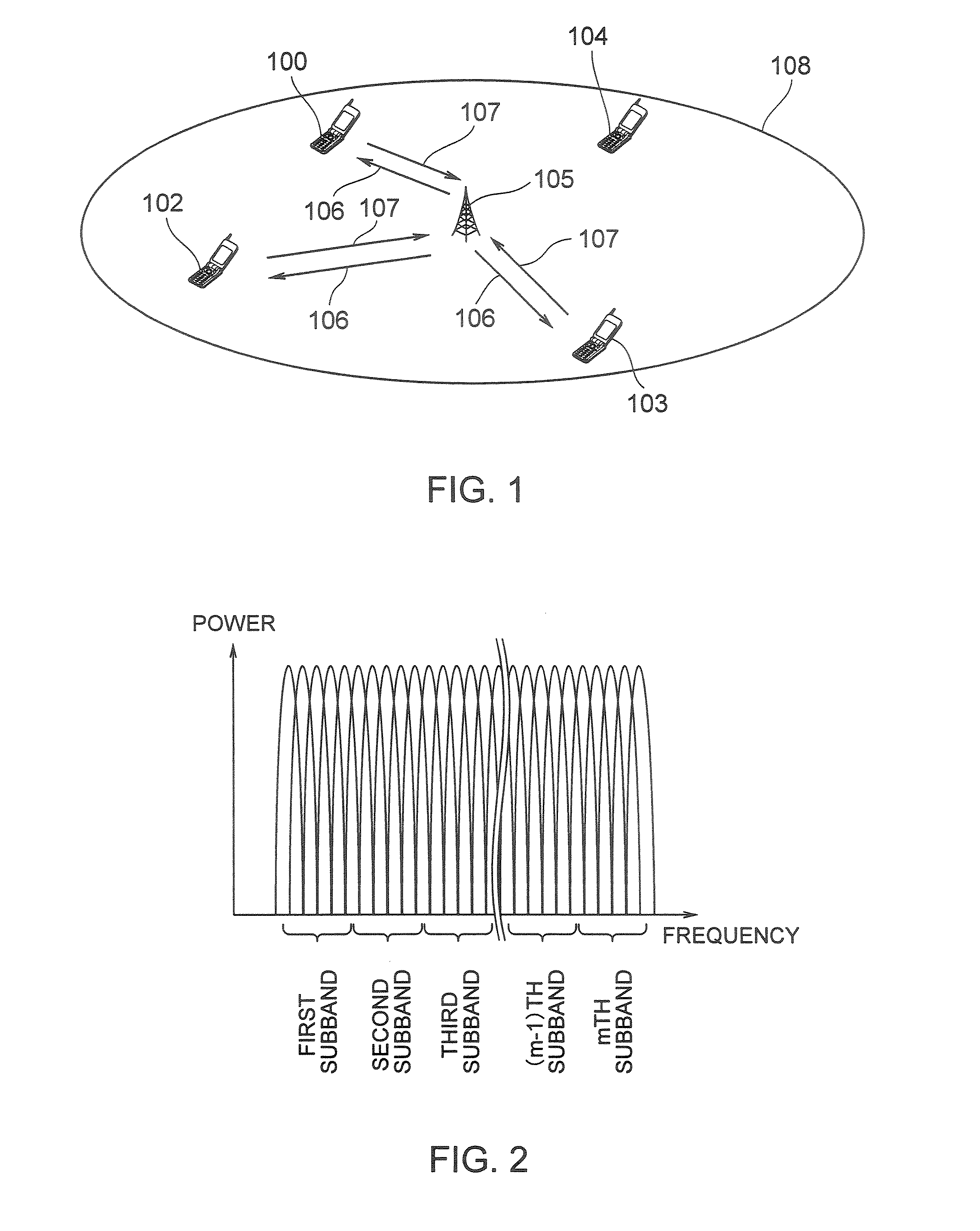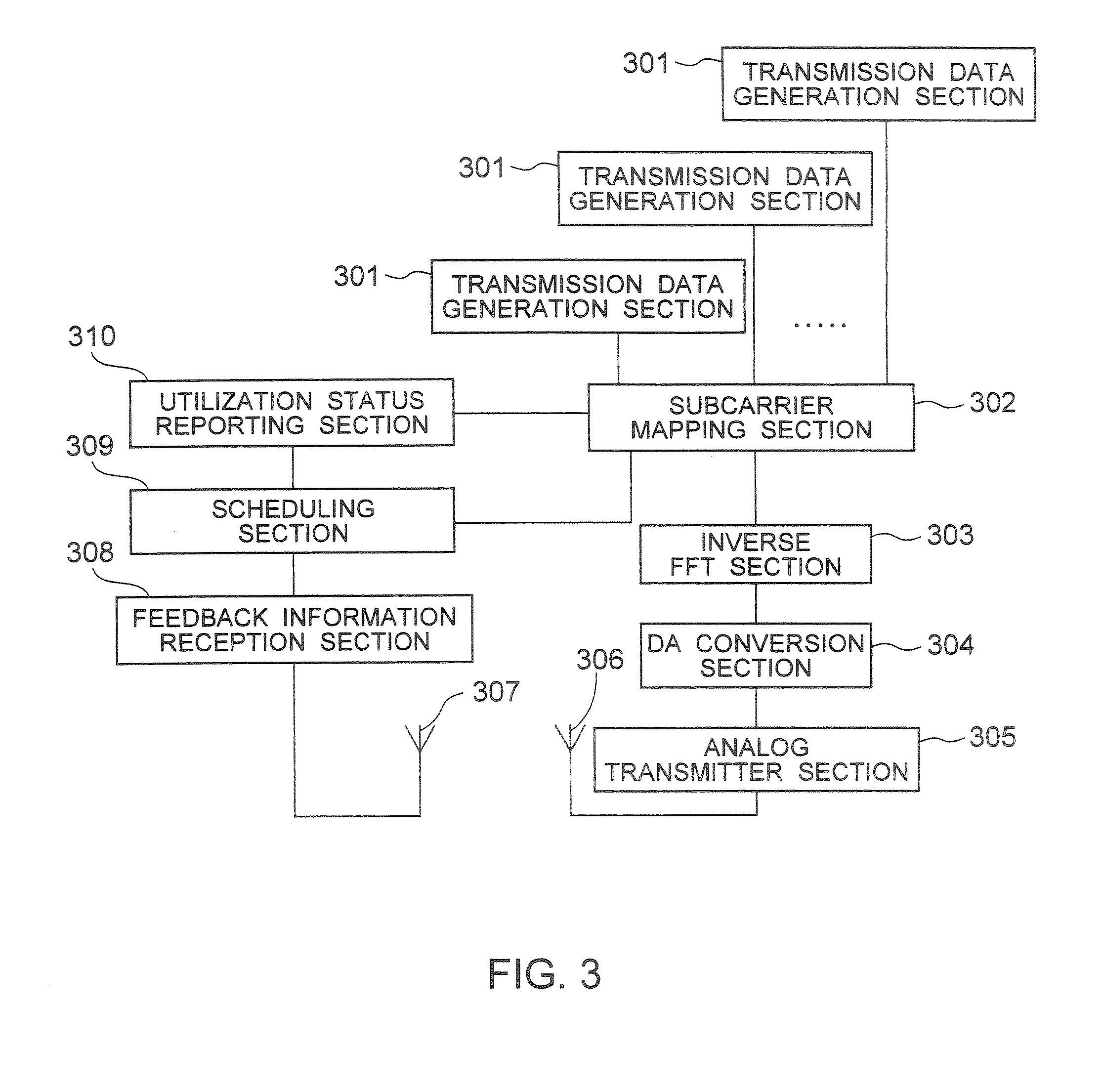Base station, radio terminal and radio communication method
a radio terminal and radio communication technology, applied in the field of base station, radio terminal and radio communication method, can solve the problems of reducing the speed of communication from the terminal to the base station, other terminals cannot easily know,
- Summary
- Abstract
- Description
- Claims
- Application Information
AI Technical Summary
Benefits of technology
Problems solved by technology
Method used
Image
Examples
first embodiment
[0043]FIG. 1 shows an example of a radio communication system according to this embodiment. This radio communication system includes a base station 105 and a plurality of radio terminals (hereinafter simply referred to as “terminals”) 101, 102, 103, 104. The terminal 101, terminal 102, terminal 103 and terminal 104 are located within reach of radio signals from the base station 105, that is, within a communication area (cell) 108.
[0044]Radio signal transmission from the base station 105 to the respective terminals 101 to 104 is called a “downlink 106” and radio signal transmission from the respective terminals 101 to 104 to the base station 105 is called an “uplink 107.”
[0045]A multicarrier communication scheme such as OFDM (Orthogonal Frequency Division Multiplexing) or multicarrier CDMA (Code Division Multiple Access) is used for the downlink 106. In a multicarrier communication, communication is carried out using a plurality of subcarriers arranged on a frequency axis. An OFDM co...
second embodiment
[0109]In a second embodiment, scheduling using a scheduling table will be described in detail though some parts of explanations overlap the explanations of the first embodiment.
[0110]As in the case of the first embodiment, suppose an OFDMA (Orthogonal Frequency Division Multiple Access) communication as shown in FIG. 7 whereby communication is carried out using m subbands obtained by dividing an OFDM subcarrier group into the plural. Suppose that the transmission path is temporally divided into frames and the current time point corresponds to an nth frame. Furthermore, as shown in the scheduling table in FIG. 8, suppose data under QoS control directed to a terminal X is being sent in a first subband from the base station during transmission in the current nth frame and the transmission of this data under QoS control is completed in the nth frame. Furthermore, suppose data under QoS control directed to a terminal B is being sent in an (m−1)th subband of the nth frame from the base st...
third embodiment
[0117]A third embodiment is characterized by adding information indicating a degree of importance of transmission data to an assigned flag. Hereinafter, this embodiment will be explained in detail.
[0118]As data transmitted from a base station to each terminal, there are data having a high degree of importance, interruption of transmission of which is hardly allowed or data having a low degree of importance, interruption of transmission of which may be allowed if necessary. Thus, the base station assigns not only an assigned flag but also information indicating a degree of importance of data carried by the subband to which data under QoS control is assigned, to the subband. That is, the degree of importance is included in an assignment status signal indicating that assignment is already completed. The degree of importance may have two values so as to be described with 1 bit, but by using a plurality of bits to express the degree of importance with multivalues, the degree of importanc...
PUM
 Login to View More
Login to View More Abstract
Description
Claims
Application Information
 Login to View More
Login to View More - R&D
- Intellectual Property
- Life Sciences
- Materials
- Tech Scout
- Unparalleled Data Quality
- Higher Quality Content
- 60% Fewer Hallucinations
Browse by: Latest US Patents, China's latest patents, Technical Efficacy Thesaurus, Application Domain, Technology Topic, Popular Technical Reports.
© 2025 PatSnap. All rights reserved.Legal|Privacy policy|Modern Slavery Act Transparency Statement|Sitemap|About US| Contact US: help@patsnap.com



